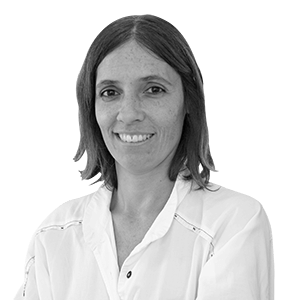More apartments and a market: Barcelona is looking for neighbours and neighbourhood life in 22@
The new planning corrects housing deficits with 8,000 more apartments and provides new public facilities


BarcelonaA neighbourhood market, sports courts or schools. These are just a few examples of the facilities that the Barcelona City Council plans to locate in a 35,000 square meter reserve (15 plots) in its technology district: 22@. The urban planning changes that are being prepared in this area of the city, which was born twenty-two years ago, are focused above all on correcting the lack of neighbours to make it not only a good place to work, but also a neighbourhood of Barcelona. The municipal government has been working for years on a modification of the general metropolitan plan (MPGM) to change the rules of the game in 22@ in order to finish developing the spaces that remain unused - 40% of the area has yet to be developed - and to add housing, and today it presented the final document that is expected to be approved next week at the Urban Planning Commission. The final proposal adds a thousand more apartments to the one that was initially processed in 2020 and leaves the final figure at 8,000 apartments to be added to the 9,000 that were foreseen in 2000.
According to the latest proposal, this area of 200 hectares - the equivalent of 115 Eixample blocks - could therefore have up to 17,000 homes: 12,000 affordable and 5,000 free market. The latter are, above all, the 4,000 that were already planned. On the other hand, 1,000 houses which were to be knocked down will stay up.
The new dwellings will be built without affecting the total square meters foreseen for economic activity. Existing buildings will be made talles, although never taller than the six floors, and there will also be new developments: while the previous plan established that 90% of the area had to be for economic activity and only 10% was authorised for housing, now this percentage is increased to 30% in search of the desired "mix of uses", so that 22@ is a place "to live and work", in the words of the deputy mayor of Urbanism, Janet Sanz, who defended that most of the new housing will be public and for rent.
She has not given final figures because the planning depends largely on private initiative, but Sanz has taken for granted that almost 80% of the 12,000 affordable apartments will end up being public. On the other hand, deputy mayor Jaume Collboni has put the spotlight on the more economic aspect of the planning, which foresees the development of one million square meters more for economic activity, which will be added to the two million already developed or in the pipeline. In total, there will be the three million square meters of floor space that were already foreseen in the 2000 plan. The new plan, however, broadens the range of activities that can be located in 22@ and opens the door to proposals such as culture, sports, education and the green economy.
The City Council estimates that with the one million square meters now planned to be activated, 60,000 new jobs could be created and, by 2030, 175,000 jobs could be created. "This is going like lightning," said Collboni, who pointed out that last year the Sant Martí district alone, where 22@ is located, generated more investment in office spaces than the entire city of Madrid, and that today there are already 11,500 companies located in this technology district.
Pedestrianising one in three streets
The other leg of the MPGM which is expected to be passed this month is to add green spaces to the streets in the area. In fact, the idea is to apply a very similar plan to the one that will be deployed in the Eixample and turn one in three streets into pedestrian-priorirty areas, with 70% of the space without traffic, compared to the current 40%. This network will also mean the creation fifteen new squares at intersections where these streets intersect.
The horizontal green axes will be Almogàvers, Sancho d'Àvila, Cristòbal de Moura, Pujades, Doctor Trueta and Bolívia; and the vertical ones, Àlaba, Ciutat de Granada, Lope de Vega, Fluvià, Treball and Puigcerdà. In total, ten new hectares of green space are expected to be generated
To move towards this, the City Council and the Generalitat have agreed on a new urban key, especially designed for the streets of 22@. According to the deputy mayor for Urban Planning, this should help Sant Martí and the Eixample to begin "the most important urban revolution of the last thirty years". In the case of 22@, the new planning also envisages preserving twenty backstreets that run along historical routes and protecting 450 properties with heterogeneous fronts.
